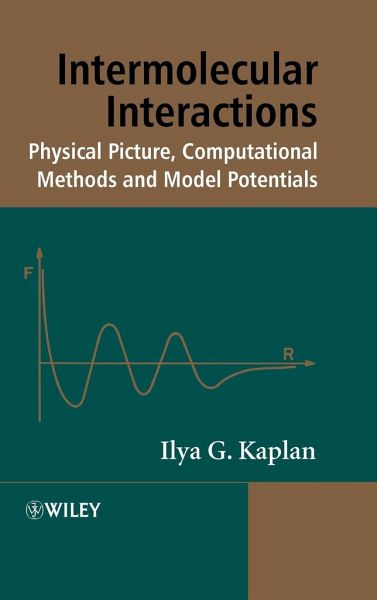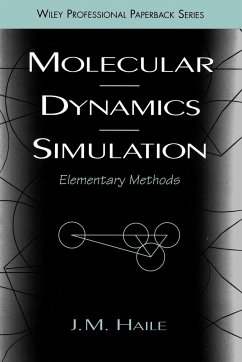
Intermolecular Interactions
Physical Picture, Computational Methods and Model Potentials

PAYBACK Punkte
123 °P sammeln!
The subject of this book--intermolecular interactions-- is as important in physics as in chemistry and molecular biology. Intermolecular interactions are responsible for the existence of liquids and solids in nature. They determine the physical and chemical properties of gases, liquids, and crystals, the stability of chemical complexes and biological compounds.In the first two chapters of this book, the detailed qualitative description of different types of intermolecular forces at large, intermediate and short-range distances is presented. For the first time in the literature, the temperature...
The subject of this book--intermolecular interactions-- is as important in physics as in chemistry and molecular biology. Intermolecular interactions are responsible for the existence of liquids and solids in nature. They determine the physical and chemical properties of gases, liquids, and crystals, the stability of chemical complexes and biological compounds.
In the first two chapters of this book, the detailed qualitative description of different types of intermolecular forces at large, intermediate and short-range distances is presented. For the first time in the literature, the temperature dependence of the dispersion forces is analyzed and it is shown that the famous Casimir-Polder formula for dispersion forces is incorrect at any finite temperature. The author has aimed to make the presentation understandable to a broad scope of readers without oversimplification. In Chapter 3, the methods of quantitative calculation of the intermolecular interactions are discussedand modern achievements are presented. This chapter should be helpful for scientists performing computer calculations of many-electron systems.
The last two chapters are devoted to the many-body effects and model potentials. More than 50 model potentials exploited for processing experimental data and computer simulation in different fields of physics, chemistry and molecular biology are represented. The widely used optimization methods: simulated annealing, diffusion equation method, basin-hopping algorithm, and genetic algorithm are described in detail.
Significant efforts have been made to present the book in a self-sufficient way for readers. All the necessary mathematical apparatus, including vector and tensor calculus and the elements of the group theory, as well as the main methods used for quantal calculation of many-electron systems are presented in the appendices.
All those working on the theoretical and experimental studies of intermolecular interactions in chemistry, physics, biochemistry and molecular biology will find this text of interest and it will appeal to advanced undergraduates, graduates and researchers.
In the first two chapters of this book, the detailed qualitative description of different types of intermolecular forces at large, intermediate and short-range distances is presented. For the first time in the literature, the temperature dependence of the dispersion forces is analyzed and it is shown that the famous Casimir-Polder formula for dispersion forces is incorrect at any finite temperature. The author has aimed to make the presentation understandable to a broad scope of readers without oversimplification. In Chapter 3, the methods of quantitative calculation of the intermolecular interactions are discussedand modern achievements are presented. This chapter should be helpful for scientists performing computer calculations of many-electron systems.
The last two chapters are devoted to the many-body effects and model potentials. More than 50 model potentials exploited for processing experimental data and computer simulation in different fields of physics, chemistry and molecular biology are represented. The widely used optimization methods: simulated annealing, diffusion equation method, basin-hopping algorithm, and genetic algorithm are described in detail.
Significant efforts have been made to present the book in a self-sufficient way for readers. All the necessary mathematical apparatus, including vector and tensor calculus and the elements of the group theory, as well as the main methods used for quantal calculation of many-electron systems are presented in the appendices.
All those working on the theoretical and experimental studies of intermolecular interactions in chemistry, physics, biochemistry and molecular biology will find this text of interest and it will appeal to advanced undergraduates, graduates and researchers.














